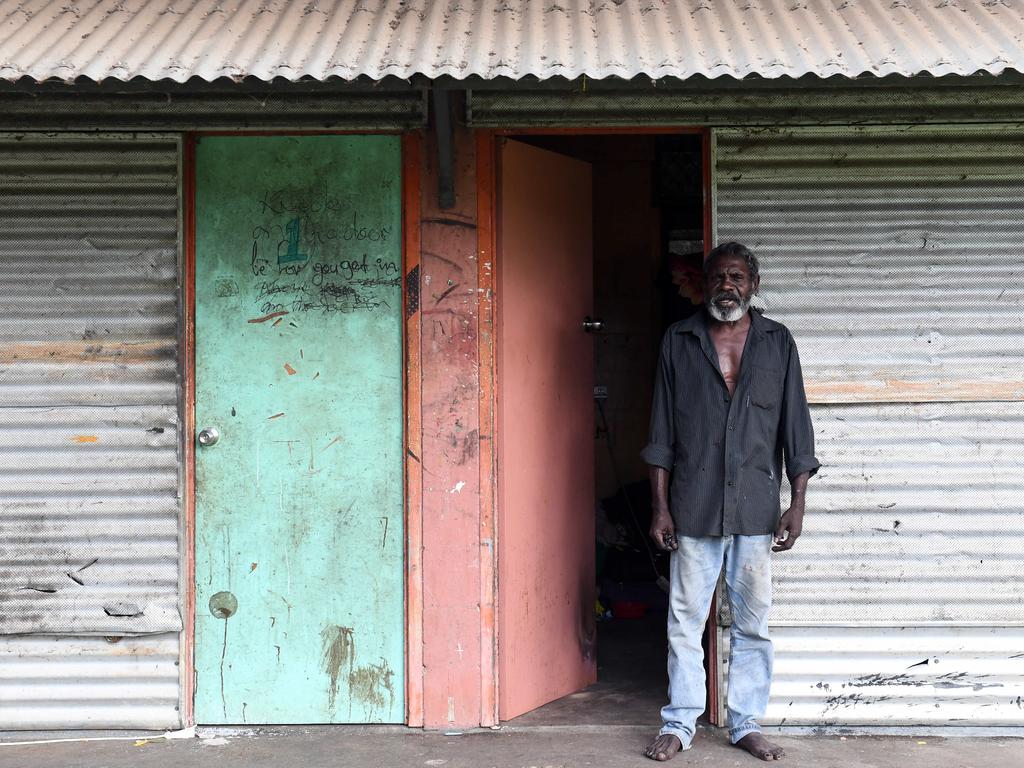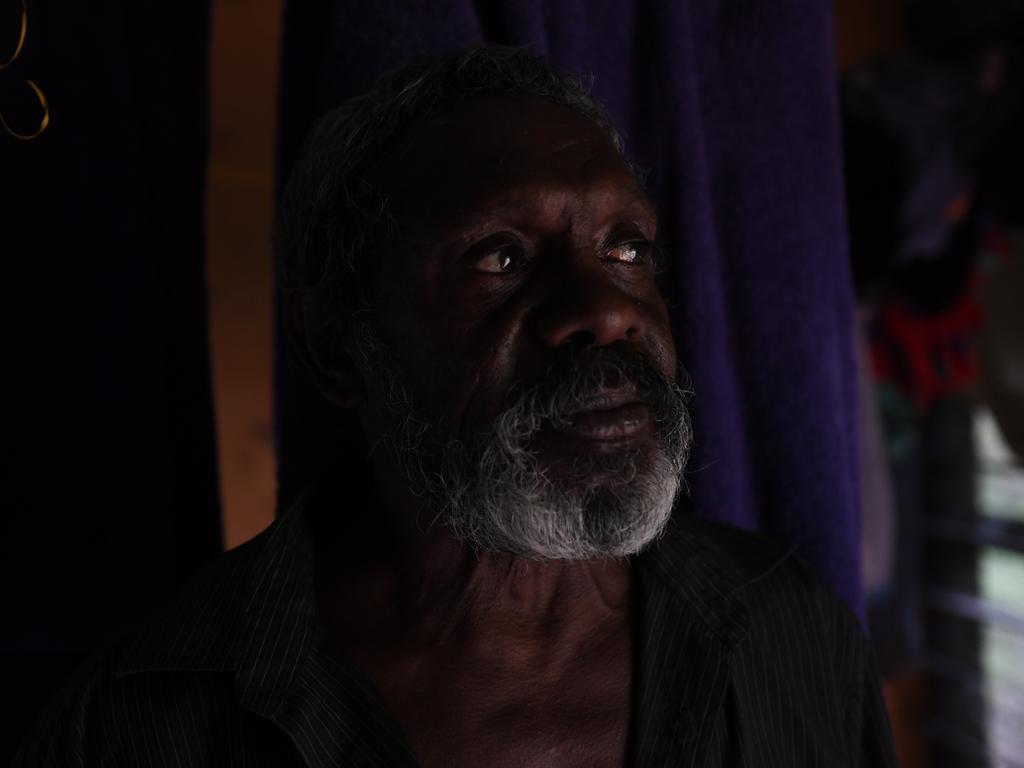New Closing the Gap target dictates minimum standard for NT remote housing
Indigenous people live in sheds barely fit for animals. A new Closing the Gap target aims to bring remote NT housing up to scratch by 2031 but questions remain over how this project will be funded.
Hidden out of sight at one of the Territory’s biggest tourist attractions is Manaburdurma, a town camp the community refers to as the ‘human chook sheds’.
The set of corrugated tin sheds sit side-by-side, rapidly deteriorating in the Top End’s brutal climate.
Along the wetlands floor runs extensions cords connecting neighbours to the few working power points on each property.
For almost three decades, John Lemibanda has slept on the floor of one of the men’s sheds - three rooms connected by pressed tin and a slab of cement.
Mr Lemibanda is just one of people residing in substandard housing on remote Aboriginal communities in the Northern Territory.
“This is where we live ... a human chook shed,” the talented artist who works at Marrawuddi Arts & Culture centre in Jabiru, the hive of tourism for Kakadu National Park, said.
“I can’t even run the fan in my room cause it’s broke.
“I told them so many times but no one fixed it.”
Mr Lemibanda’s shed has an extension cord along the floor to a portable fan in the corner of his tiny three-metre by two-metre home.
“Termites have eaten through the wires so none of the power works properly round here,” he said, gesturing to the whole community.
“We just want to be safe - someone could die here.
“They wouldn’t let no white people live here.”
Last year, Warnbi Aboriginal Corporation said in a series of maintenance emails that a number of houses had “a real bad termite issue”.
“Over years insulation has been eaten off a lot of electrical cables, so a few houses are with the same problem and there is no quick fix,” the email reads.
“There is only one solution to that problem is to rewire the whole house.
“We have been able to secure some extra funds last year from the Department of Homelands to rewire some houses, by the time we received approval for the grant and got some costings together it wasn’t right time of the year to take roof off to rewire house.”
Manaburdurma was the only Top End town camp not to receive part of a $35m investment from Territory Labor in 2019.

New Closing the Gap target
In late August, the Closing the Gap joint council defined a new Community Infrastructure target, that will mean all homelands and remote community housing will have to meet a minimum standard by 2031.
However, the federal government was reluctant to explain how this target would be met and what additional funding outside the $300m promised before the election would be included in the October 2022 budget.
Indigenous Australians Assistant Minister Malarndirri McCarthy said it was a significant milestone to have all governments agree homelands and town camps needed serious redevelopment.
“This is an ambitious target that will require a lot of work throughout the next decade with several budgets and various governments to work through this together,’ she said when asked how much federal Labor would contribute to the target.
“Federal Labor went into the election with a strong commitment to deliver a boost of $100m for housing and essential services on Northern Territory homelands – after the Liberals and Nationals stopped supporting basic services in these communities.”

Mrs McCarthy said housing was key when addressing many underlying issues in Aboriginal communities.
“Investments in health, education, safety and employment outcomes for Indigenous Territorians are amplified if people have better standards of safe and adequate housing to start with,” she said.
The state of essential services in remote NT
Australian National University public health researcher Simon Quilty said the decades of neglect had left a huge gap for remote communities in the NT.
“As an example, the Australian Bureau of Statistics lists suburbs in terms of poverty – the Index of Relative Socioeconomic Disadvantage,” Dr Quilty said.
“NSW has 4111 suburbs, of which just three are listed as being in the bottom one per cent of poverty.
“In the NT, we have 255 suburbs and 73 are in the bottom 1 per cent - every single one of those suburbs is a remote community.”
Dr Quilty said Northern Territory remote communities were among the poorest in the world.
“For the Community Infrastructure Targets to succeed, there needs to be transparency on the economics of the plan,” he said.
“Allocating resources to rectify this inequity chasm must recognise how far behind the NT has left its First Nations people compared to all other states.”
Dr Quilty’s research considers the health impacts of substandard infrastructure, power poverty and climate change on remote Aboriginal communities in the Northern Territory.
He said the extreme housing crisis was already being exacerbated by climate change – for example, it is likely that not a single remote Indigenous dwelling meets National Energy Efficiency Standards.

“The housing that does exist is already grossly inadequate for a hotter future, where energy efficiency is really going to matter,” Dr Quilty said.
The complete absence of a rooftop solar programs for town camp and remote community tenants have seen them locked out of economic benefits of renewable energy and trapped further behind in entrenched poverty.”
Dr Quilty said remote Territorians deserved “bang for buck”.
“Why is it that a simple three-bedroom house that doesn’t even meet the national standards for thermal energy efficiency costs almost $1 million to build?,” he said.
“First Nations people in town camps and remote communities have never been given grants to put solar on their rooftops when so many other Territorians have.”
He also expressed concerns about how governments would address water insecurity for communities with “poor and dwindling aquifer reserves”.
More Coverage
Originally published as New Closing the Gap target dictates minimum standard for NT remote housing








